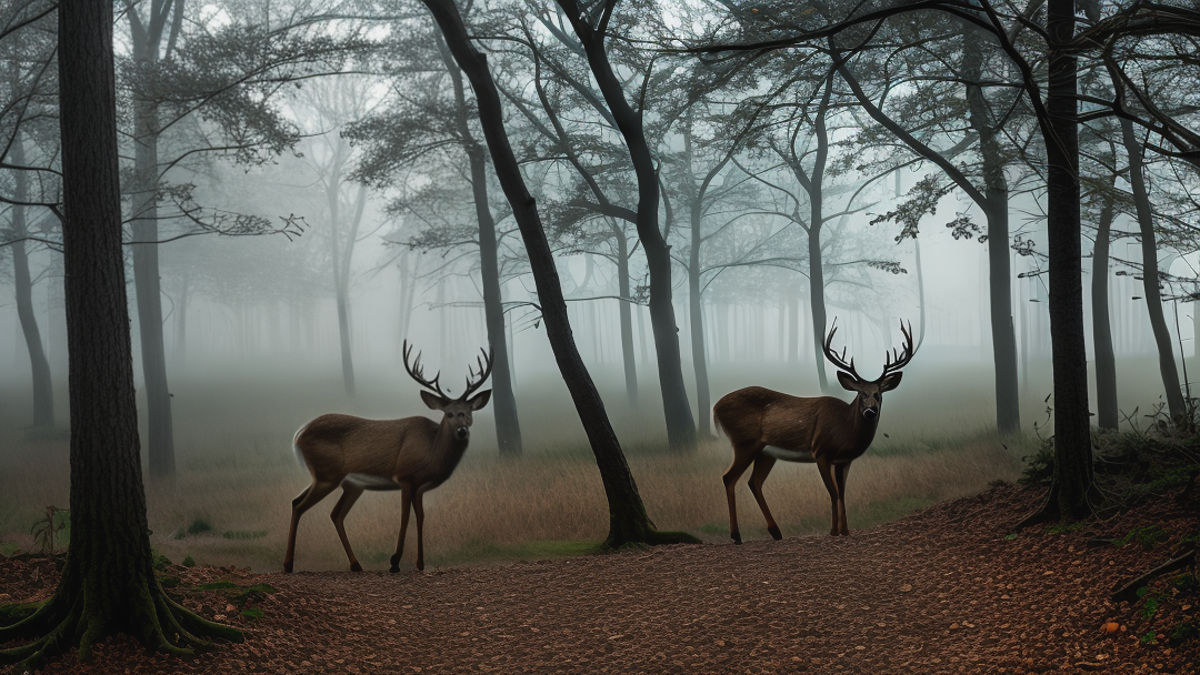Deer activity has been a suject wildlife enthusiasts and hunters study. Many people believe that deer are nocturnal. They believe that deer move and feed only under the cover of darkness. This is a common misconception.
Most deer are crepuscular. This means they are most active during the low-light periods of dawn and dusk. This behavior allows them to maintain a balance between predator avoidance and foraging.
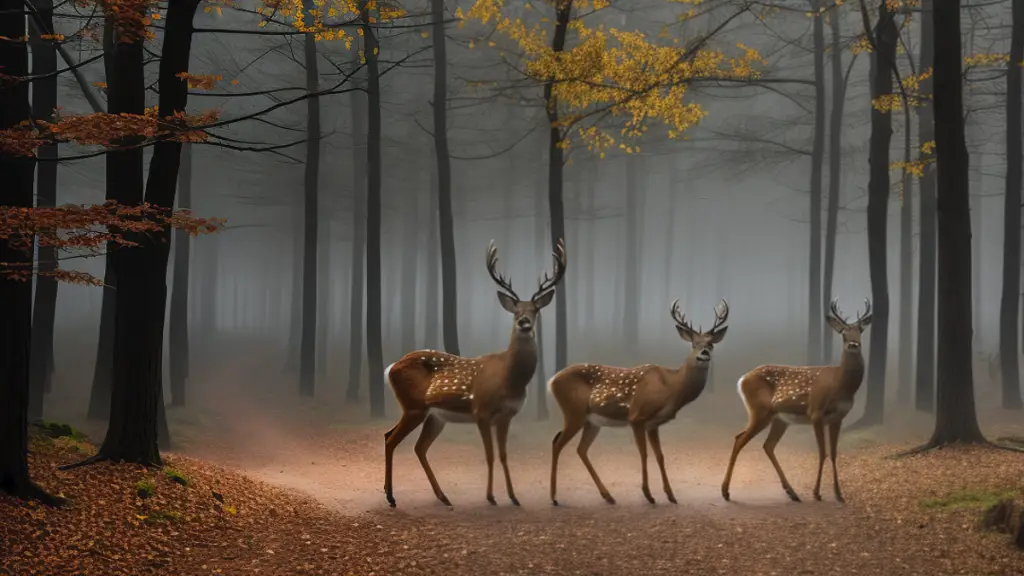
Time of year, availability of food, and presence of predators can impact activity. Hunting pressure can cause deer to adopt more nocturnal habits. They use this as a survivial strategy. You may see white deer more at night in areas with heavy hunting.
Trail cameras have helped researchers understand these patterns better. Studies give valuable information to scientist studying deer patterns. They can also give valuable information to hunters looking to target mature bucks.
Key Takeaways
- Deer are crepuscular, most active at dawn and dusk, but can exhibit nocturnal behavior.
- Factors like predators, human activity, and hunting pressure influence deer movement.
- Understanding these patterns benefits both wildlife management and deer hunting strategies.
Table of Contents
Are Deer Nocturnal
Deer are active at night, but they are most active during the early morning and late evening. Let’s look deeper into when deer like to move around.
Understanding Deer Activity Patterns
Deer are not night-only animals. They are actually primarily crepuscular. This means they are most busy during twilight hours. These hours occur just after the sun sets and before it rises. During these times, they feel more safe dangers.
Factors like the season and hunting pressure can change when deer move. For instance, during deer hunting season, they might move more at different times. This helps them stay safe. Trail cameras show that some big bucks and mature bucks move more at night to avoid other hunters.
Factors Influencing Nocturnal Habits
Many things can make deer change when their activity pattern. Food sources are a big factor. Deer will go out to find food when they can do so safely. Humans in the woods can scare them.
Weather is another thing that changes deer activity. For example, on hot summer days, they may wait for the cooler night air to move around and feed. What’s more, the rut, or mating season, can make deer less careful about when they move.
Each individual deer may also have its own patterns. Some might move more in the daytime if they feel it’s safe. Others might stick to the safe cover of dusk and dawn. It’s key to remember that deer are not fully nocturnal. They are careful animals that adjust their behavior to avoid predators.
Species-Specific Nocturnal Traits
Different types of deer act in their own ways when it comes to being nighttime activity. The time when deer are most active can change based on what the deer is and where it lives.
White-Tailed Deer
White-tailed deer are known to be primarily crepuscular. This means they are most active during the early morning and late evening. Hunting can influence nighttime activity for safety reasons. The twilight provides enough light for white-tailed deer to feed.
Mule Deer
Mule deer are alos not truly nocturnal. They are usually on the move at dawn and dusk. During hunting season, they might change their behavior. They may avoid woods during daylight due to hunting.
Other Deer Species
Other deer species around the world also show crepuscular traits. For most deer, being moving during twilight helps them find forage while staying safe. Some may change their patterns because of where they live or changes in the seasons.
Deer living near food plots on state land might come out more during the day if it is quiet. Each group adjusts its activity to when it feels safest and can find the most food.
Adaptations for Nighttime Activity
Deer have special features that help them in the dark. They can see and move well in the dark. They also have strong bodies to stay safe.
Sensory Adaptations
Deer eyes can see in dim light much better than humans, allowing them to spot food and danger in poor lighting.
Their large ears help them hear sounds, like the steps of a hunter or other animals. This keeps them safe because if they hear a noise, they can run away.
Physical Adaptations
The bodies of deer, especially a mature buck, are built for living in the woods. They have strong legs that let them jump high and run fast. This is important to escape predators or to move around when hunting pressure is high.
They also have a thick coat that keeps them warm in the chill of the night. Deer can use these physical traits to find food and water without being seen. They use the dark to hide from people and other dangers.
Deer Movement and Behavior by Season
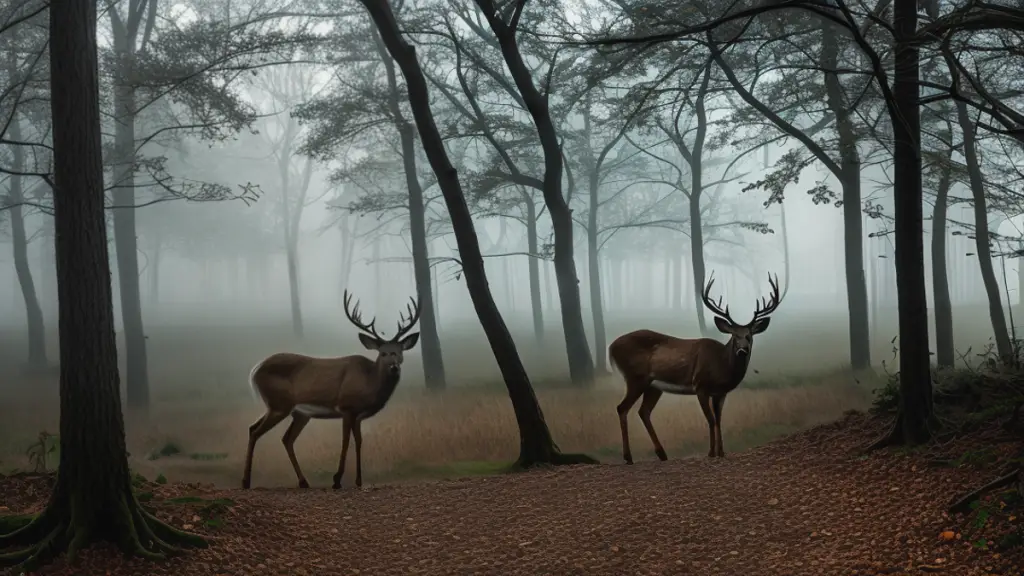
The times when deer are move the most change with the seasons. This affects when they how they stay safe.
Spring and Summer Activity
In the warm months, deer like to eat during times of low light. They rest in cool, hidden spots when the sun is high. Because there is a lot of food, you might see more deer out. This is also when baby deer are born.
Fall and Rutting Season
The fall is a busy time. It’s the season of the rut, which is when they mate. A mature buck wanders a lot looking for does. Hunters know this, so they hunt more during this time. With shorter days, more people are awake during twilight hours. This causes deer to change their patterns to stay safe.
Winter Behavioral Patterns
Winter means less food and cold weather. The animals move less to save energy. They might go to food plots in daylight if it is safe. With gun hunting, deer might become more nocturnal to avoid danger. But their deep sleep is still during the day, far from noisy places.
Human Impact on Deer Nocturnal Behavior
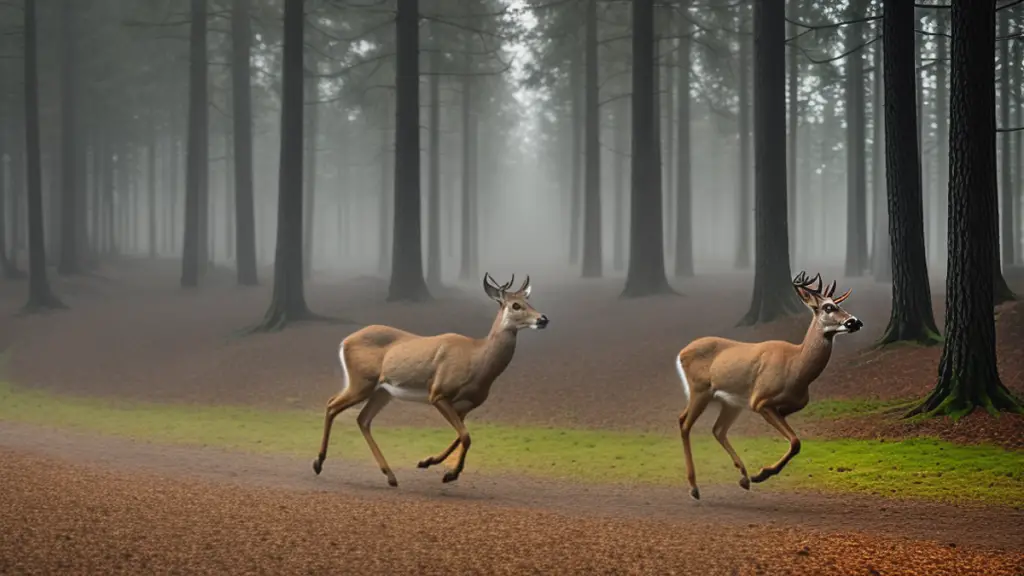
Human activities have a big effect on whether deer are moving in the dark or not. When people build more houses and roads, or when hunters stalk deer, it can change the times they move around.
Urbanization and Habitat Fragmentation
As cities grow and more houses are built, the land available for deer gets smaller. This can also make them more active at night. Even whitetail deer, which are early risers, may change their habits. They try to avoid humans and find quiet places during the day or after the sun goes down.
Deer Hunting Pressure
When it is hunting season, deer are on high alert. Many hunters wait in tree stands or near feeding areas during the day. This can make a big buck or even younger buck become stay put. Instead of moving in the twilight hours, they might wait until it is darker or move to another place.
Research and Studies on Deer Nocturnality
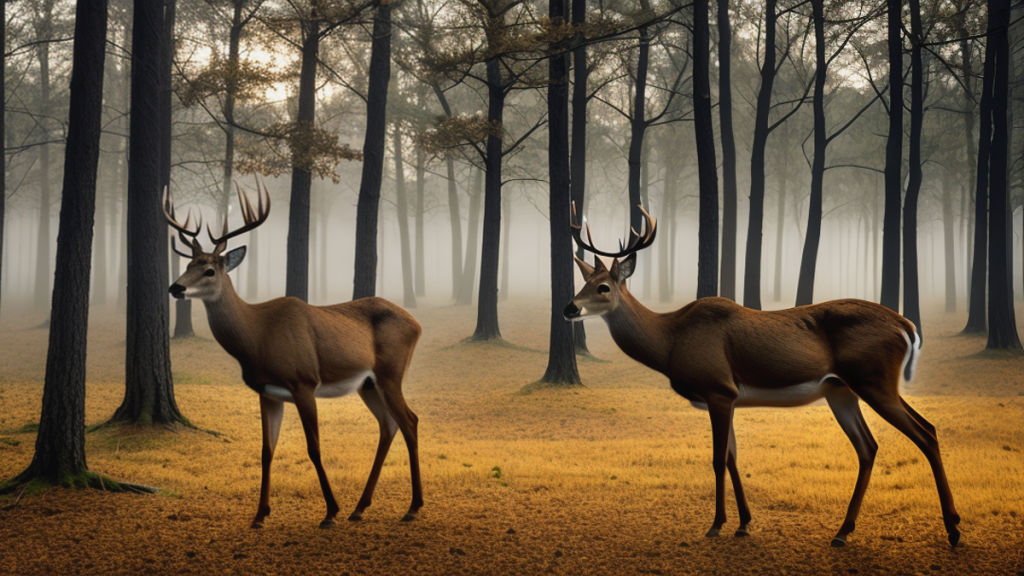
Scientists have studied when deer move and how they act. They use special tools to watch them and then study the information they find.
Tracking and Observation Methods
Researchers use different tools to keep track of where deer go and when. They put collars on that send out a signal to show where they are. Some of these collars have lights or bells.
Scientists can also use trail cameras. These cameras take pictures when they sense movement. They help scientists see deer at different times.
Data Analysis and Findings
After collecting lots of pictures and signals, scientists look at all the information. They notice that deer, especially whitetail deer, move more during the twilight hours.
They find that deer are not really nocturnal. This means they do not stay awake all night long.
Instead, many deer here are crepuscular. This means they are move more from dawn and dusk. The studies also show that hunting pressure can make deer change their habits. When many hunters are in the woods during the day, they might start moving more at night to stay safe.
Conservation and Wildlife Management
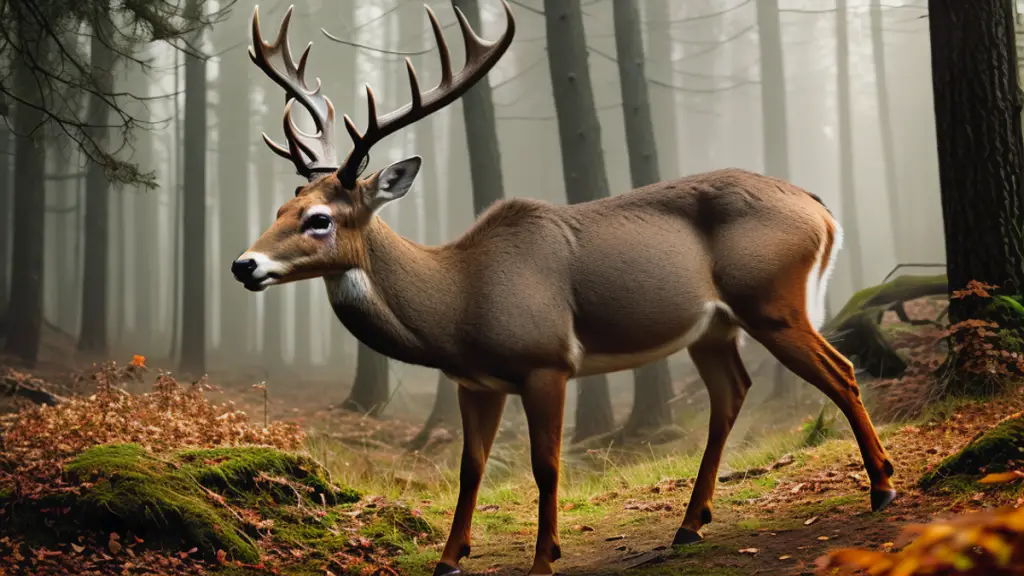
In conservation, knowing when deer are moving helps us protect them. Wildlife management uses this knowledge to make rules for for the hunt.
Impact of Nocturnality on Conservation
Being nocturnal means an animal is mostly awake at night. As we mentioned above, deer are crepuscular. This pattern helps them avoid danger from predators. When there is a lot of hunting, deer may become more active at night to stay safe.
Wildlife Management Strategies
Wildlife managers pay close attention to when deer are moving to set hunting rules. They suggest times when hunters can hunt. This helps keep the deer from being too scared to come out.
Hunters will us trail cameras and watch for signs of movement. Creating safe places for deer can also help see more deer during the day. These methods make sure we have deer around for both nature and people to enjoy.
Frequently Asked Questions
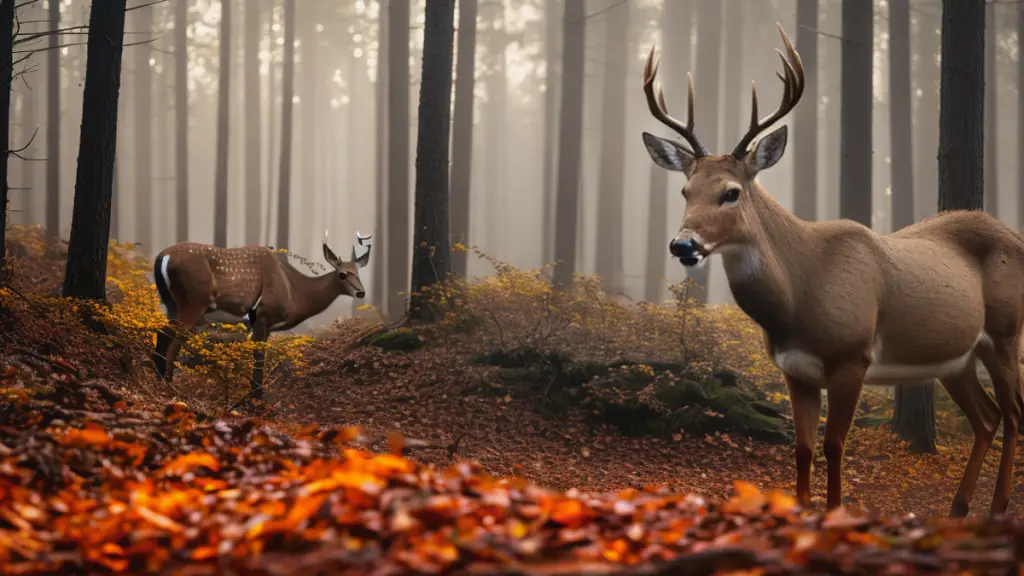
This part of the article answers common questions about when and how deer are active.
What is the difference between crepuscular and nocturnal deer behaviors?
Crepuscular animals are active during the twilight hours of dawn and dusk. Nocturnal animals are active at night.
How does seasonality affect the activity patterns of deer?
In winter, deer might change their patterns. Shorter days can lead deer to forage during limited daylight hours.
Are deer more active during twilight rather than the night?
Yes, deer are more active during twilight. They look for food in the early morning and evening. They tend to rest at night, rather than move around a lot.
Is the nocturnal behavior of mule deer different from other deer species?
Mule deer, like other deer, are mostly active at dawn and dusk. They can also be active at night due to activity from people.
To what extent can deer perceive their environment in low-light conditions?
Deer have great night vision. This helps them see in low-light. They can avoid danger when it’s dark in the early morning or late evening.
Have deer always displayed nocturnal habits, or has this evolved over time?
Over time, deer behavior can change due to humans and predators. They might become more nocturnal if they feel threatened during the day. They are naturally crepuscular and stick to those patterns when they can.

